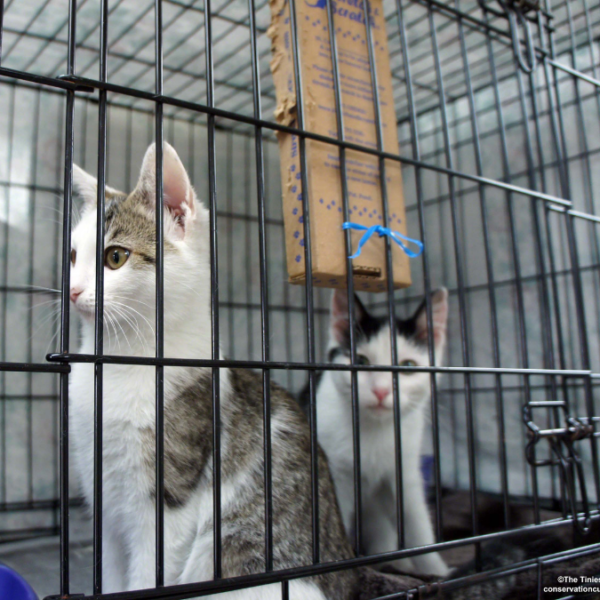
Adopt a Cat Month: History Behind The Movement
Adopt a Shelter Cat Month is established as a significant event aimed at raising awareness about the numerous cats that needing homes and encouraging people to consider adoption from shelters. Initiated by American Humane over four decades ago, this campaign was strategically placed in June, aligning with the height of the breeding season when shelters often see an influx of kittens. Adopt a Cat Month serves as a reminder that there are many cats and kittens in need of permanent, loving homes.
The importance of adopting cats from shelters has been recognized for over a century and a half in America, with the practice becoming increasingly popular due to heightened public awareness and advocacy. Adoption drives such as Adopt a Cat Month play a crucial role in helping to alleviate the pressure on animal shelters, providing second chances for countless felines, and offering potential pet owners the joys and responsibilities of feline companionship.
Key Takeaways
- Adopt a Cat Month is a pivotal initiative for promoting the adoption of shelter cats.
- The campaign coincides with the peak kitten season to address the surplus of cats in shelters.
- Adoption from shelters significantly supports animal welfare and enriches the lives of both cats and humans.
The Origin of Adopt a Cat Month
The inception of Adopt a Cat Month can be traced back to the efforts of American Humane and its significance at a national level, aiming to increase awareness and encourage cat adoptions from shelters.
American Humane Association’s Role
American Humane, an organization committed to ensuring the safety, welfare, and well-being of animals, initiated National Adopt a Cat Month 45 years ago. They launched this campaign with a clear objective: to shift the public’s focus from purchasing cats to adopting them from shelters. American Humane chose June because it is the peak of kitten season when many cats breed, leading to a surge in the population of cats needing homes.
National Significance of Adopt a Shelter Cat Month
National Adopt a Cat Month has become an awareness campaign of considerable importance at a national level. It provides a platform to educate the public on the responsibilities involved in adopting a cat and the joy that felines bring into households. During this month, American Humane also encourages animal lovers to contribute actively to initiatives like the “Feed the Hungry” campaign, amplifying the support for animal shelters across the nation. Through these collective efforts, the campaign plays a crucial role in reducing the number of cats in shelters and increasing adoption rates.

Why Adoption Matters
Adopting a cat from a shelter can be a vital step in addressing seasonal influxes of kittens, alleviating the strain on shelters, and promoting responsible cat guardianship through spaying and neutering initiatives.
Combatting Kitten Season
Kitten season is a period when cats give birth, flooding shelters with litters and stressing resources. Shelters face challenges in accommodating this surge as they work to prevent euthanasia due to space limitations. By adopting during kitten season, individuals help shelters manage this influx and open up space for other rescue animals.
Reducing Shelter Overcrowding
Shelters often operate at or above capacity, and every adoption has a significant impact. When cats are adopted, they not only find permanent homes, but also reduce the burden on shelters. This leads to:
- More resources for the remaining animals.
- Lower euthanasia rates due to crowding.
- Improved health and well-being for all animals within the shelter.
Importance of Spaying and Neutering
A critical component of responsible pet adoption includes spaying and neutering, which:
- Decreases the number of unwanted kittens: directly impacts the frequency and impact of kitten season.
- Reduces shelter intake numbers: Fewer stray and surrendered animals mean less overcrowding.
- Promotes healthier lives for pets: Spayed and neutered animals typically display fewer behavioral issues and have a lower risk of certain types of cancers.
By choosing to adopt, people support these essential practices, contributing to a solution that benefits animals, shelters, and communities.

How to Prepare for Adopting a Cat
Preparing for the adoption of a cat requires thoughtful consideration of one’s readiness, insight into feline personalities, and the gathering of essential supplies to create a nurturing environment.
Assessing cat adoption Readiness
The decision to adopt a cat should be met with a serious assessment of one’s lifestyle and resources. Prospective cat parents must contemplate the time commitment, financial responsibility, and long-term care that come with a new pet. A crucial aspect is ensuring regular veterinary care for the cat’s overall well-being and to keep vaccinations up to date.
- Time Commitment: Cats may seem independent, but they require attention, playtime, and daily care.
- Financial Responsibility: Prospective guardians must be prepared for costs such as vet visits, food, and emergency care.
- Long-Term Care: A cat’s lifespan can exceed 15 years, showing the extent of the commitment.
Understanding Cat Personalities
Cats have varied personalities and temperaments, which can greatly influence their adoption into a new home. Some may be playful and energetic, while others might prefer a quiet and solitary environment. Recognizing a cat’s personality can help in preparing the living space and setting expectations for interaction.
- Playful and Energetic: Requires more active engagement and interactive toys.
- Quiet and Solitary: May need a peaceful space and may take longer to warm up to new surroundings.
Essential Supplies and Environment
When welcoming a homeless cat into a new environment, it is vital to have all the necessary supplies on hand. A suitable litter box placement, reliable food and water bowls, nutritious food, a comfortable bed, and a scratching post are non-negotiable essentials for a cat’s environment.
Supplies Checklist:
| Supply Item | Explanation |
|---|---|
| Litter Box | Must be easily accessible and kept clean. |
| Food and Water Bowls | Should be stable to avoid spills. |
| Nutrition | High-quality food appropriate for the cat’s age and health. |
| Scratching Post | Protects furniture and allows natural behavior. |
| Bed | A cozy spot for the cat to rest and feel secure. |
| Toys | Stimulates the cat and provides exercise. |
A well-prepared environment also includes cat-proofing the home to prevent the new cat from getting into harmful substances or situations. Secure loose wires, ensure that windows have screens, and remove or secure valuables that could be damaged.
The Adoption Process
Adopting a cat involves several important steps that ensure a good match between the feline and its potential forever home, along with ensuring the health and well-being of the animal post-adoption.
Working With Shelters and Rescue Groups
When considering adoption, prospective cat parents should start by contacting local animal shelters or rescue groups. Reputable organizations will have a clear process in place which includes:
- Application forms that screen for a good fit between the pet and adopter.
- Interviews to understand the adopter’s lifestyle and match it with the right cat.
- Home visits may be required to ensure the environment is safe and suitable for a cat.
Adoption fees are commonly required; these usually cover spay/neuter surgery, vaccinations, and sometimes even microchipping.
Selecting the Right Cat
Choosing a cat that aligns with an individual’s lifestyle and preferences is crucial for a lasting relationship. Here are factors to consider:
- Personality: Shy or outgoing? Independent or affectionate? The cat’s temperament should complement the adopter’s expectations.
- Age: Kittens require more time and attention, while older cats might be preferable for a calmer environment.
- Health: Ask for any known health issues and ensure you’re prepared to address them.
Post-Adoption Veterinary Care
Once a cat is adopted, establishing a relationship with a reliable veterinarian is essential. Immediate veterinary care should include:
- A thorough health checkup and setting up a vaccination schedule.
- Discussion of dietary needs, identification options, and routine health practices.
- Reviewing and updating the cat’s medical records.
Maintaining regular veterinary visits is vital for the long-term health of the adopted cat.

Financial Considerations
When adopting a cat, one should be cognizant of not only the initial cost of adoption but also the ongoing expenses necessary for a cat’s care.
Understanding Adoption Fees
Adoption fees can serve as a barrier to impulse adoptions, ensuring that potential owners are serious about the lifelong commitment. Adoption fees typically include:
- Spaying/neutering
- First vaccinations
- Microchipping
Rescue organizations might adjust their fees, which commonly range from $50 to $150. Some may offer reduced fees during events like “Adopt a Cat Month” to encourage adoption. In contrast, acquiring a cat from a breeder can significantly increase costs, with prices potentially reaching into the thousands.
Long-Term Budgeting for a Cat
The true cost of cat ownership extends well beyond the initial adoption fee. Owners should plan a monthly budget that includes food, litter, routine vet care, pet insurance, toys and supplies.
Unexpected veterinary care can lead to considerable expenses, for which setting aside an emergency fund or investing in pet insurance can be prudent. Additionally, donations to shelters or rescue organizations are voluntary but can provide support for other animals in need.
Post-Adoption Support and Resources
After welcoming a new feline family member, pet owners often need guidance and assistance. Access to resources and a supportive community can be instrumental in ensuring a smooth transition for the cat and its human companions, nurturing the bond that is built on unconditional love.
Educating New Cat Parents
Cat parents are provided with various educational resources to help them understand and meet their new cat’s needs. Detailed care guides cover topics such as:
- Nutrition: Proper feeding schedules, dietary needs, and understanding cat food labels.
- Healthcare: Information on vaccinations, spaying/neutering, and regular health check-ups.
- Behavior: Insights into feline behavior, litter training, and establishing a daily routine.
- Safety: Tips on creating a safe home environment and the importance of identification tags and microchips.
Local shelters often host workshops or provide literature on cat care, and many vets are available for post-adoption consultations. Social media also serves as a valuable tool, with numerous groups and forums where new owners can seek advice and support.
Community and Online Support
The importance of a supportive community cannot be overstated for new cat parents. There are various platforms they can turn to:
- Local Support Groups: Many neighborhoods have local meet-ups for pet parents to share experiences and advice.
- Online Forums: Platforms like Reddit and Facebook host a wealth of pet groups for peer-to-peer support.
- Shelter Hotlines: Post-adoption support lines provided by shelters offer guidance and can address immediate concerns.
Family and friends who have experience with cats can also be a source of support. Encouraging cat parents to reach out builds a strong support system, contributing to the lifelong welfare of the adopted cat.
Impact of External Factors on Cat Adoption
During times of change, the patterns of cat adoption can be influenced by various external factors. These factors range from global health crises to shifts in social awareness, each leaving a distinct mark on the adoption processes and outcomes.
Effects of COVID-19 on Pet Adoption
The COVID-19 pandemic profoundly impacted pet adoption rates, invoking a substantial increase in the number of people seeking feline companionship. As social interaction diminished due to lockdowns and social distancing, the desire for pets for comfort and company soared. Pet adoption agencies and animal shelters reported an unprecedented surge in interest as individuals looked to fill the void of reduced human contact. This was further influenced by the increase in remote work, which allowed potential pet parents to spend more time at home.
- Foot Traffic: Physical restrictions led to a decrease in foot traffic within animal shelters.
- Adoption Processes: Many shelters adapted by enhancing online adoption services.
- Funding: Various shelters faced financial constraints due to the pandemic, affecting their operational capacity.
The Role of Social Awareness in Adopt A Cat Month
Social awareness campaigns have also played a significant role in influencing cat adoption rates. Initiatives such as “Adopt a Cat Month” have successfully heightened public consciousness about the needs of shelter cats and the benefits of adoption. These campaigns use a blend of storytelling, statistics, and community engagement to encourage individuals to consider adopting a cat.
- Pet Awareness Events: Events and months dedicated to pet adoption increase the visibility of shelter animals.
- Community Involvement: Social media has enabled shelters to engage with a broader community, thus enhancing the potential for cat adoptions.
- Educational Impact: Increased awareness leads to society understanding the responsibilities and joys of pet ownership, influencing positive adoption outcomes.
adopt a shelter cat month Promotion and Advocacy
Efforts to promote ‘Adopt a Cat Month’ are multifaceted, utilizing specific events, renowned personalities, and collaborative endeavors to raise awareness and encourage cat adoption.
Leveraging Special Events and Holidays
Campaign organizers capitalize on special events and holidays to maximize exposure and participation. The American Humane Association designates June as Adopt-A-Cat Month®, aligning with the peak of “kitten season” to address the influx of kittens in shelters. Events such as fundraisers and adoption drives become focal points for advocacy during this time. Shelters and organizations might host:
- Bake sales
- Garage sales
- Charity runs
- Adoption events
These initiatives aim to gather support, both financial and in terms of finding homes for cats in need.
Celebrity and Influencer Endorsements
The use of celebrity and influencer endorsements has proven effective in broadening the campaign’s reach. High-profile individuals often take to social media to share their love for cats and to support the Adopt a Cat Month initiative. Their influence is pivotal in:
- Drawing public attention
- Encouraging followers to consider adoption
- Highlighting the roles of the Humane Society and other organizations
Through these endorsements, the campaign’s message resonates across a wider audience, enhancing the likelihood of successful adoptions.
Partnerships Between Organizations
The American Humane Association often collaborates with local shelters, the Humane Society, and pet supply stores to amplify the campaign’s impact. These partnerships are crucial for:
- Providing resources and support for shelters
- Facilitating coordinated efforts across multiple platforms
- Hosting joint events to engage communities
Through such partnerships, the campaign’s effectiveness is significantly increased, promoting the welfare of cats and encouraging the public to adopt rather than buy pets.
Expanding the Adoption Conversation
The dialogue on pet adoption is multifaceted, integrating educational efforts with a global view on animal welfare.
Education in Schools and Communities
Education serves as a powerful tool for expanding the adoption conversation. Schools and communities play critical roles in fostering awareness about the positive impacts of adopting pets from shelters rather than purchasing from breeders. Integrating animal welfare topics into school curricula can influence the perspectives of young minds. For example, discussions and classroom activities can highlight:
- The Overpopulation Issue: Teachers can explain how adoption helps alleviate the stress on shelters that are often overwhelmed with animals, especially during peak breeding seasons.
- Rescue Stories: Sharing success stories of shelter pets can inspire students and community members to support rescues.
- Responsible Cat Parenting: Educators can address the long-term commitments and responsibilities involved in adopting and caring for a pet.
Through concerted education efforts, the message about the benefits of adoption over purchasing from breeders can be spread effectively.
International Perspectives on Adoption
Looking at international perspectives on adoption sheds light on the diverse attitudes and policies surrounding animal welfare. Different countries have unique challenges and solutions when it comes to pet adoption:
- Adoption Rates and Trends: Some countries report higher adoption rates, influenced by cultural attitudes and the availability of rescue organizations.
- Legislation: Globally, there is a range of laws governing pet adoption, breeding, and animal welfare, reflecting varying degrees of efficacy and enforcement.
- Public Awareness Campaigns: Internationally, there are efforts similar to Adopt-a-Cat Month that aim to promote the benefits of adopting pets and improving the lives of animals in need.

Adopt a Cat Month Frequently Asked Questions
June’s ‘Adopt a Cat Month’ prompts inquiries about its origins, festivities, and benefits for both cats and communities. This initiative has significantly influenced the adoption rates of shelter cats.
What is the origin of ‘Adopt a Shelter Cat Month’?
‘Adopt a Shelter Cat Month’ was initiated by the American Humane Association. The campaign was established to raise awareness of the millions of cats in shelters awaiting adoption and to encourage the public to consider these animals when looking for a new pet.
How is ‘Adopt a Cat Month’ celebrated across the United States?
Throughout the United States, ‘Adopt a Cat Month’ is celebrated with various events organized by animal shelters and humane societies. These can include adoption specials, educational workshops, and community outreach programs designed to highlight the benefits of cat adoption and support for local animal shelters.
What are some ways to participate in Adopt a Shelter Cat Month?
Individuals can participate by visiting local shelters to adopt a cat, volunteering at these facilities, or by promoting the event on social media to increase awareness. Donations of food, supplies, or funds to rescue organizations are also impactful ways to contribute.
Why is June designated as ‘Adopt a Cat Month’?
June coincides with the peak ‘kitten season,’ when the largest number of kittens are born and consequently, when shelters experience an influx of these animals requiring extra support and resources. The designation helps to alleviate shelter crowding and find permanent homes for cats.
What are the benefits of adopting a cat during ‘Adopt a Cat Month’?
Adopting a cat from a shelter during ‘Adopt a Cat Month’ can often come with reduced adoption fees and a full veterinary checkup, including vaccinations and spaying or neutering. It also creates space in shelters for more animals in need and raises overall awareness about pet adoption.
How has ‘Adopt a shelter Cat Month’ impacted shelter cat adoption rates?
‘Adopt a Cat Month’ has increased the number of adoptions from shelters, thereby reducing the number of cats euthanized due to overpopulation. It has brought attention to the plight of homeless cats and encouraged community involvement in the welfare of animals.